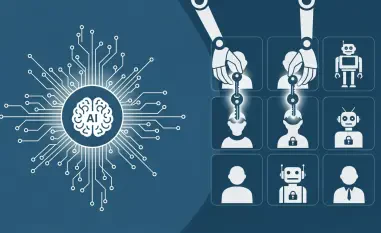In a world where digital battlegrounds are as critical as physical ones, the United States faces an escalating challenge from adversarial nations, with China standing out as the most formidable cyber threat. At the recent Billington Cyber Summit in Washington, National Cyber Director Sean Cairncross delivered a compelling address, outlining the cybersecurity priorities of the current administration. His speech underscored a stark reality: the U.S. must urgently strengthen its cyber workforce and modernize defenses to keep pace with sophisticated state-sponsored attacks. As cyber threats grow in complexity, the question looms large—can the nation’s talent pool and strategic initiatives effectively neutralize the dangers posed by such a capable opponent? This pressing issue demands a deep dive into the state of the cyber workforce, legislative frameworks, and technological advancements that could tip the balance in this high-stakes digital conflict.
Building a Robust Cyber Talent Pipeline
The foundation of any effective cybersecurity strategy lies in the strength of its human capital, a point Cairncross emphasized with urgency during his address. Developing a skilled workforce capable of countering advanced threats from nations like China requires a multifaceted approach. Initiatives must focus on collaboration between government, industry, academia, and the military to create a seamless pipeline for talent development. By leveraging existing educational programs and training platforms, the U.S. can upskill current professionals while attracting fresh faces to the field. Cairncross highlighted the importance of removing barriers and aligning incentives to ensure that talent is not only cultivated but also retained within critical sectors. This long-term vision aims to build a patriotic and dedicated workforce ready to defend national interests in cyberspace, addressing a gap that adversaries have exploited for years through persistent and coordinated attacks.
Beyond recruitment and training, sustaining investment in cyber workforce development remains a critical priority for national security. Cairncross pointed to past efforts under previous administrations as a blueprint, advocating for the continuation of strategies that have shown promise. The focus must extend to creating opportunities for continuous learning, ensuring that professionals stay ahead of evolving threats like ransomware and state-sponsored espionage. Partnerships with top-tier research universities and innovative private-sector entities can drive this progress, fostering an environment where skills are honed to match the pace of technological change. With adversaries like China investing heavily in their own cyber capabilities, the U.S. cannot afford to lag behind in nurturing a talent pool that is both diverse and specialized. This strategic emphasis on human resources could prove to be the decisive factor in maintaining a competitive edge in the digital domain.
Strengthening Federal Defenses and Legislation
A parallel concern in countering cyber threats lies in fortifying federal infrastructure, an area Cairncross identified as needing immediate attention. Modernizing outdated systems and hardening networks against sophisticated attacks are non-negotiable steps in protecting national assets. Plans to collaborate with the Office of Management and Budget and various agencies aim to accelerate this transformation, preparing for emerging challenges such as the post-quantum computing era. The directive to “get our own house in order” reflects a commitment to resilience, ensuring that government systems are not the weak link in the national defense chain. As adversaries continuously probe for vulnerabilities, the urgency to update and secure federal technology cannot be overstated, especially when facing a rival with the resources and intent to exploit any lapse.
Equally vital is the legislative framework that supports cybersecurity efforts, with Cairncross urging Congress to reauthorize the Cybersecurity Information Sharing Act before its expiration. This law, pivotal a decade ago in fostering collaboration, offers liability protections and other benefits that remain essential today. A supportive policy environment can enhance public-private partnerships, enabling a unified response to threats from state actors. Streamlining regulations and reducing compliance burdens for industry also featured in the discussion, signaling an intent to create a cooperative rather than adversarial relationship with private entities. As cyber threats from nations like China grow more aggressive, timely legislative action and robust policy measures are indispensable to bolster defenses and ensure that the U.S. remains proactive rather than reactive in this ongoing struggle.
Harnessing Innovation for Cyber Resilience
Emerging technologies represent both a significant opportunity and a challenge in the fight against cyber adversaries, a duality Cairncross addressed with clarity. Innovations in artificial intelligence, quantum computing, software, and big data hold the potential to revolutionize how threats are detected and mitigated. However, securing these advancements against exploitation is paramount, as adversaries seek to weaponize the same tools for malicious ends. Aligning innovation with stringent security measures can empower the U.S. to not only protect itself but also respond decisively to attacks. This forward-looking approach recognizes that staying ahead in the cyber race requires a balance between embracing cutting-edge technology and safeguarding it from hostile forces with advanced capabilities.
The private sector plays a crucial role in this technological frontier, with Cairncross encouraging industry leaders to adopt high standards like security and privacy by design. A collaborative environment where regulators and companies work together can drive progress without stifling innovation. The administration’s pledge to ease regulatory burdens aims to foster this synergy, ensuring that private entities are partners in bolstering national resilience. With cyber threats showing no signs of abating, the integration of new technologies into defense strategies must be swift and deliberate. By prioritizing secure innovation, the U.S. can position itself to counter sophisticated attacks from nations like China, turning potential vulnerabilities into strengths that deter aggression in the digital realm.
Charting the Path Forward in Cybersecurity
Reflecting on the insights shared during the Billington Cyber Summit, it becomes evident that a united front is essential in addressing the cyber challenges posed by adversarial nations. Cairncross’s address laid out a comprehensive roadmap that prioritizes workforce development, federal modernization, legislative support, and technological innovation. These efforts aim to build capacity and resilience, ensuring that the nation is not merely reacting to threats but actively staying ahead of them. The emphasis on collaboration between government and industry underscores a shared responsibility in safeguarding digital frontiers. Moving forward, the focus should shift to implementing these strategies with urgency, investing in talent, updating critical infrastructure, and securing emerging technologies. By sustaining this momentum and fostering partnerships, the foundation can be laid for a robust defense capable of meeting sophisticated challenges head-on, securing a safer digital future for all.













